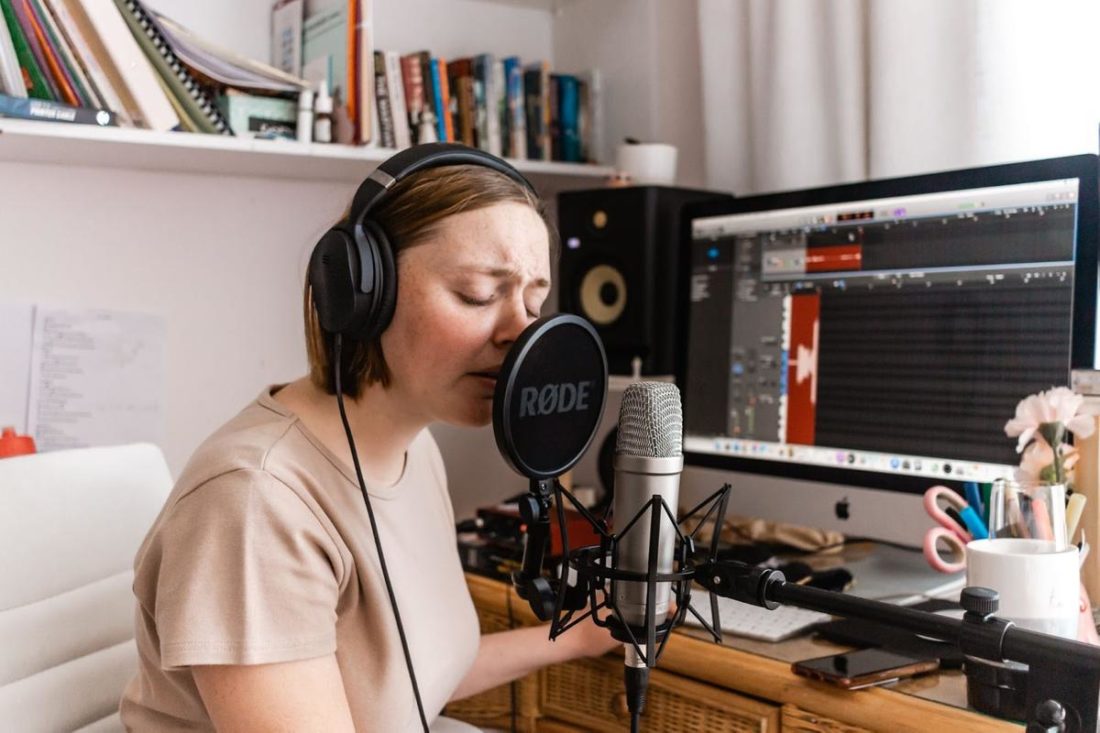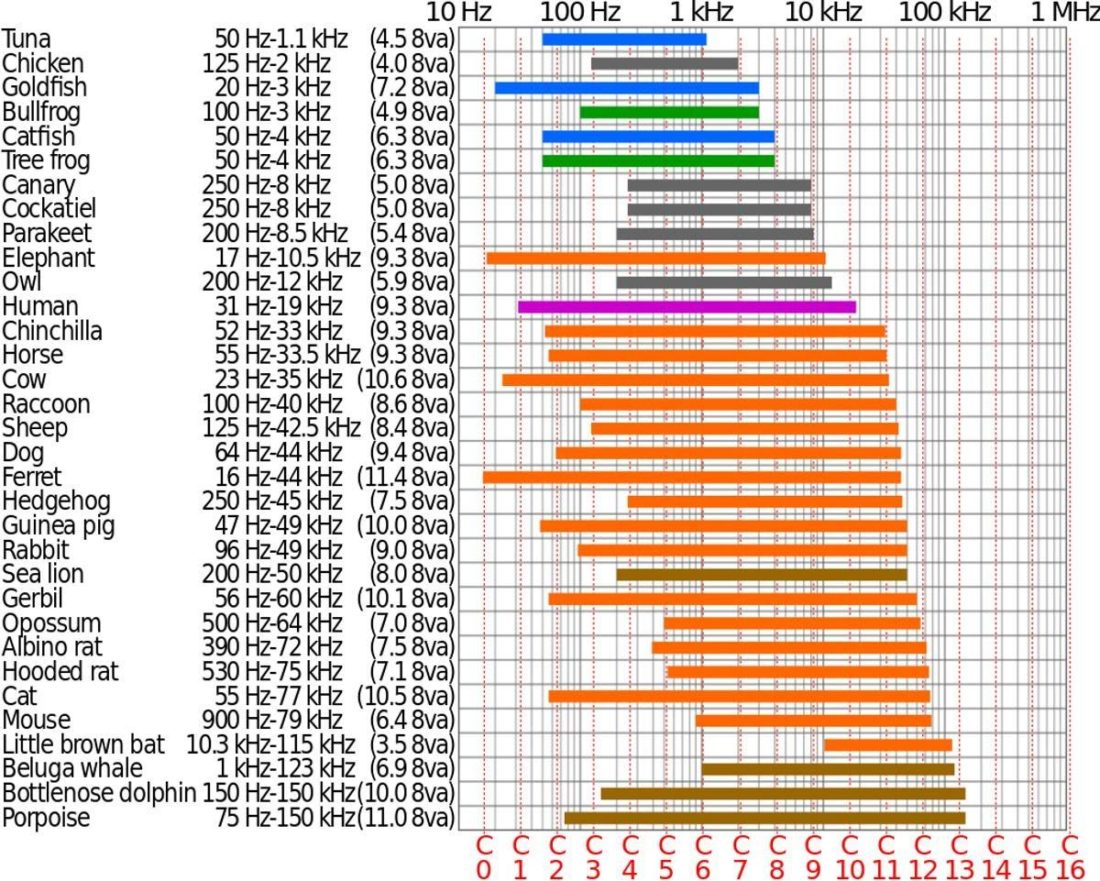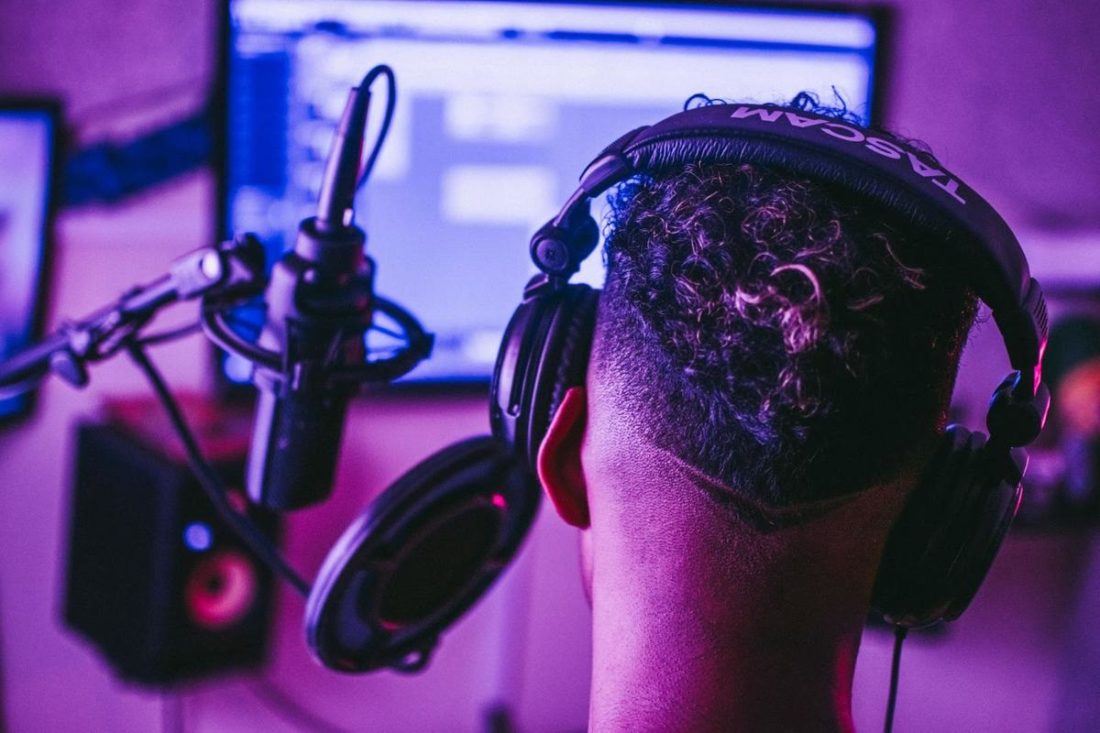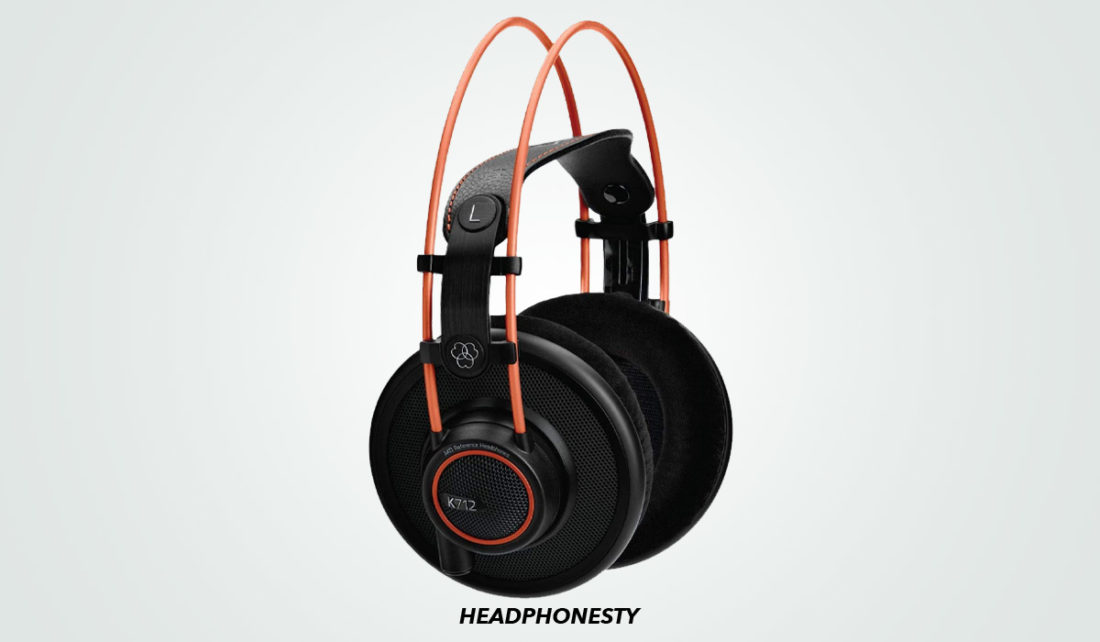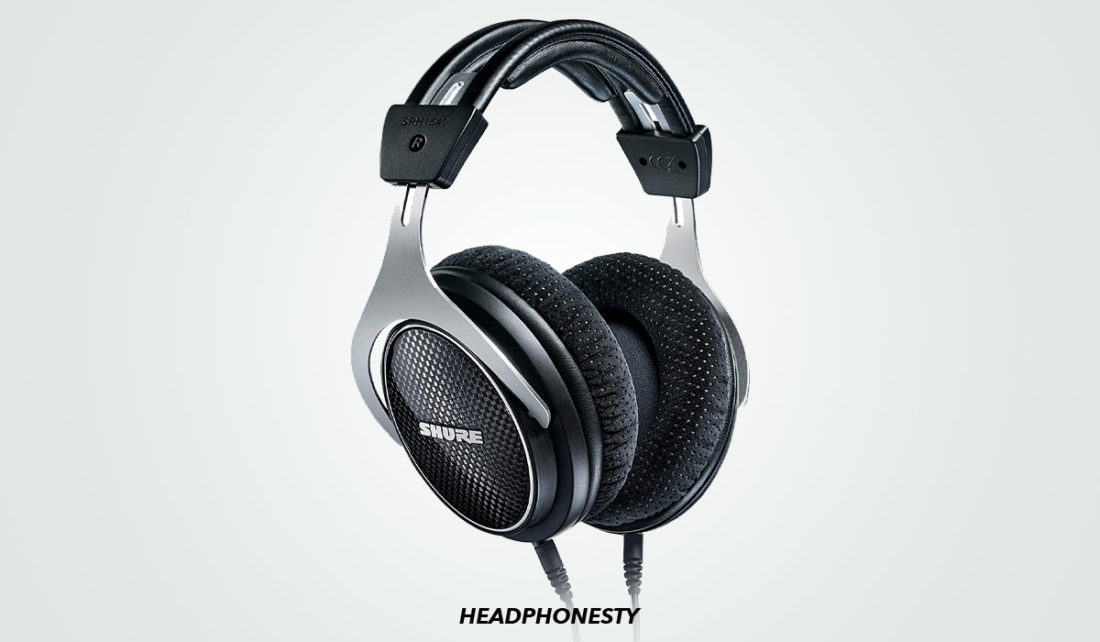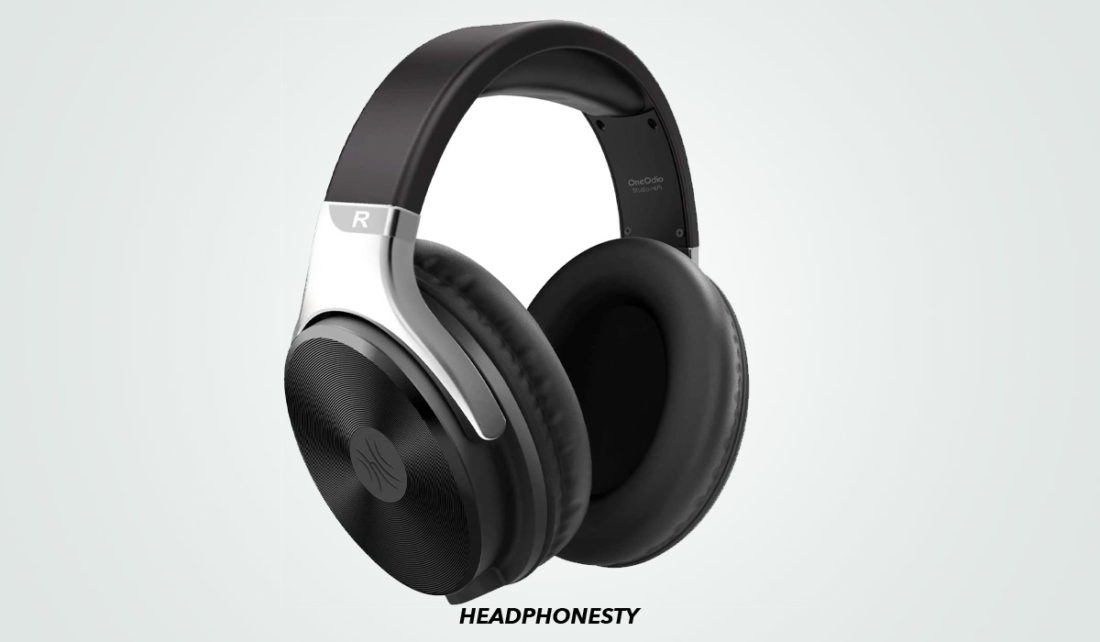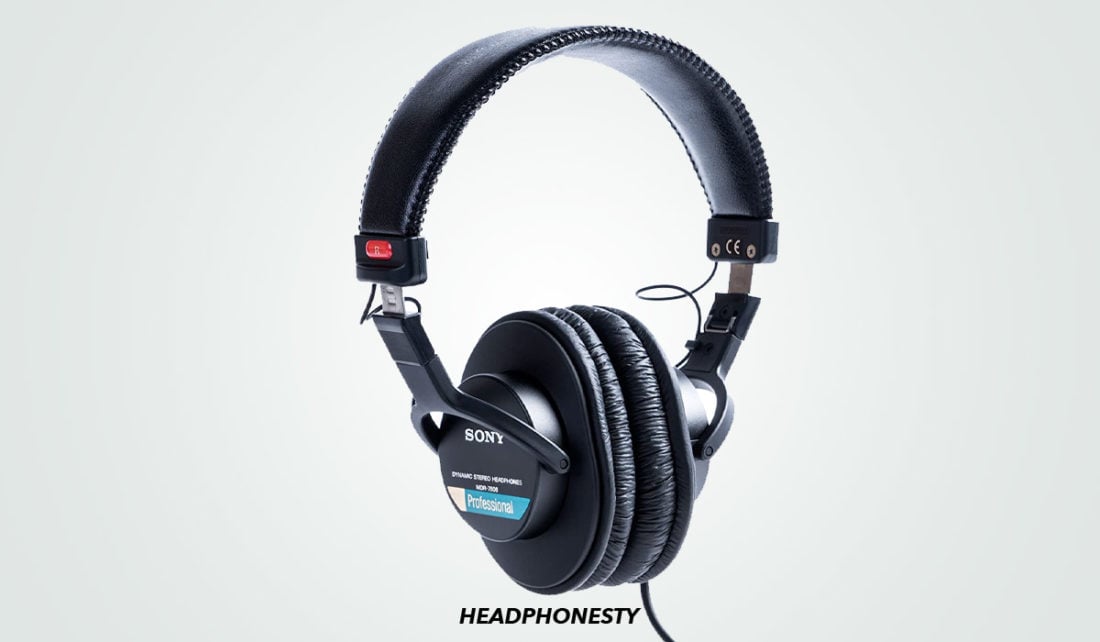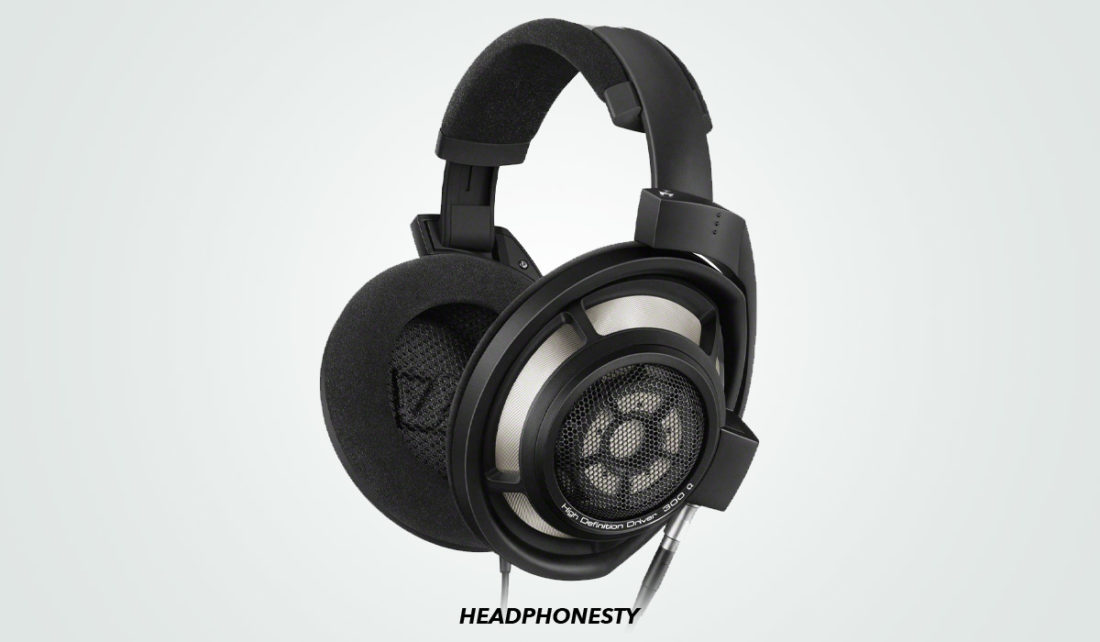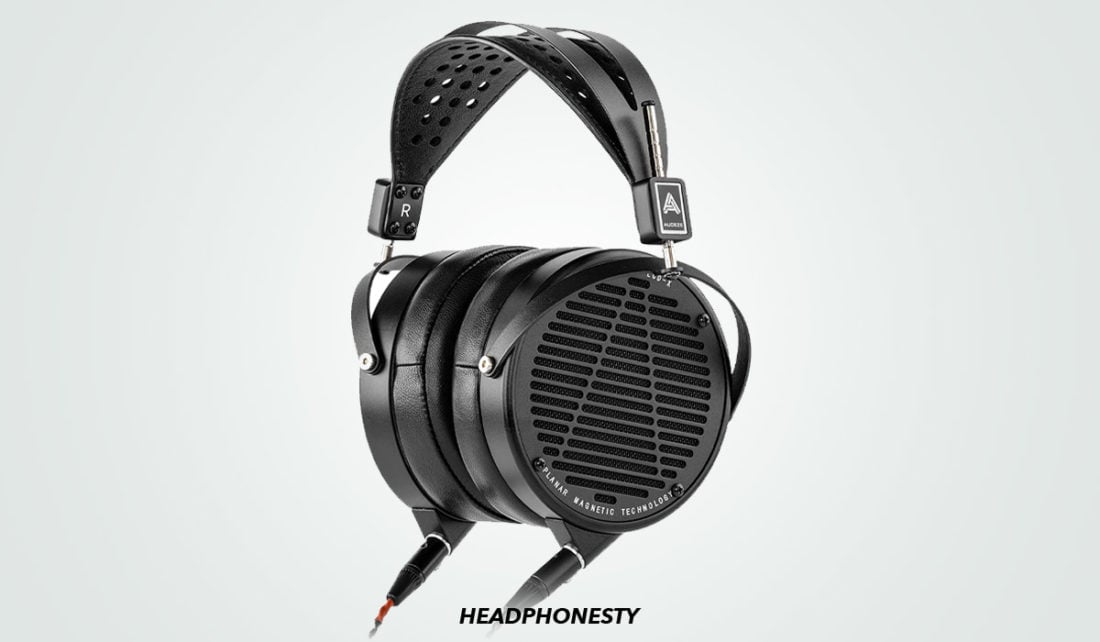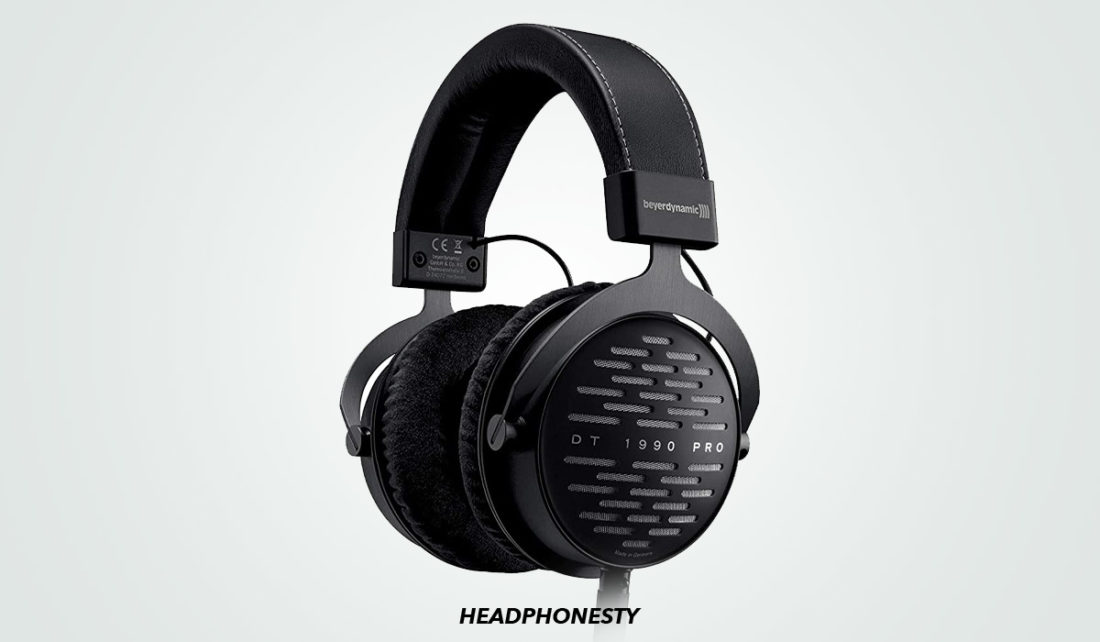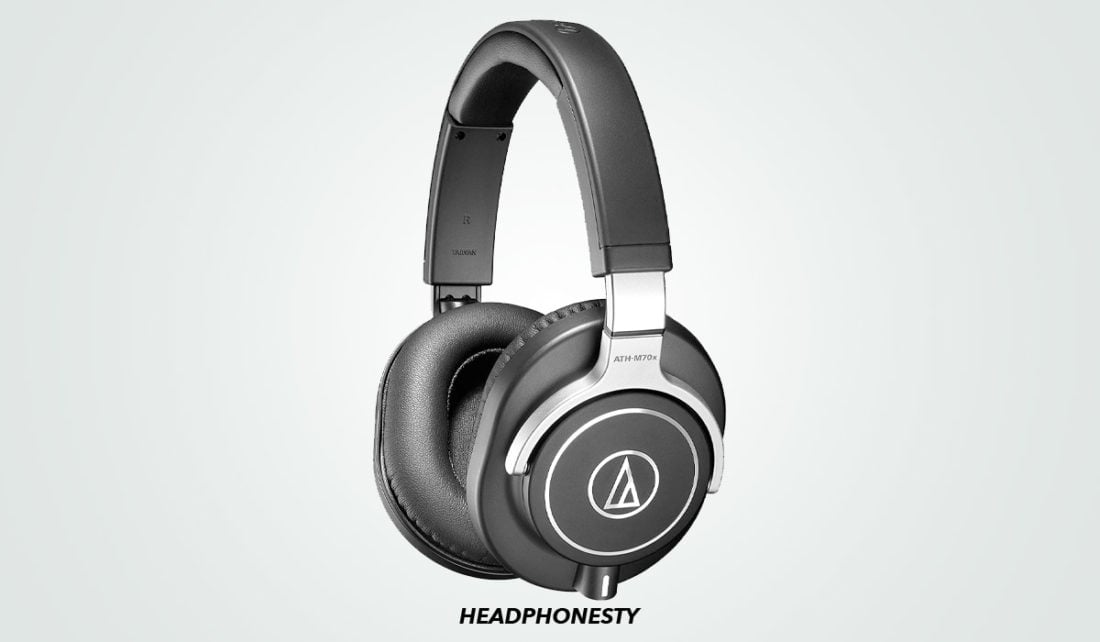How to Choose the Best Studio Headphones
Making, recording, and mixing music all require listening to audio over extended periods of time. In the studio, you’ll be monitoring audio frequently, ensuring that the audio sounds great in every medium. Thus, it’s crucial that what you hear while mixing or recording is faithful to the sound you will later play and produce. But, this isn’t a feat that normal headphones can do. And that’s where studio headphones enter the picture. For this reason, studio headphones don’t usually come cheap. However, more expensive studio headphones don’t necessarily translate to better-quality headphones. So it’s still best to carefully consider which headphones you’d invest more to get the best audio recording or mixing experience, instead of simply going for the more expensive pairs. There are key considerations you need to know in picking out studio headphones. These include design, sound quality, and comfort, among others. Let’s go through these considerations one by one.
AKG K712 PRO
Key features
Type: Open Back Impedance (Ω): 62 Sensitivity (/mW): 105 dB Drivers: 40mm, dynamic Frequency Response: 10Hz to 39.8KHz Cable Length: 3m Detachable Cable: Yes Connector Type: 3.5mm and 6.3mm adapter Weight (lbs): 0.51
The AKG K712 Pro offer an incredible price-to-performance ratio, and can even stand side-by-side with higher-priced candidates on this list. With the great sound detail and accuracy they offer, you won’t have any problems with sound fidelity in the studio. And thanks to their perfect balance of quality specs, performance reviews, and budget-friendliness, they are our top pick for the best studio headphones this 2022. Music recording requires headphones that can isolate noise and prevent sound from leaking from the ear cups into the microphone. This allows for a crisp and clean recording, free from external noise or interruption. However, if you’re mixing audio, you won’t benefit from these features. Rather, you will need headphones that sound natural, ensuring accuracy in the quality of its output. Hence, although these activities both use studio headphones, they require different key characteristics. Two kinds of studio headphones correspond to the qualities they need: open-back and closed-back headphones.
Closed-back headphones
Closed-back headphones have large, over-ear earpads, which provide users complete noise cancellation and sound isolation. These prevent the audio from leaking into the microphone during recording sessions. They also allow the listener to focus on the music and hear its littlest details. This makes them the perfect companion for studio recordings.
Open-back headphones
Open-back headphones have large ear cups that allow sound and air to flow freely. These are usually vented or mesh-covered, preventing pressure build-up from altering sound quality. This set-up also makes the audio more natural and accurate. As such, they’re a great choice for audio mixing. This refers to the accuracy or fidelity of an audio output to its source material, as heard from a pair of headphones. In music recording and audio mixing, studio headphones with great sound quality are crucial. If you can’t test a pair of studio headphones to determine its sound quality, don’t worry. You can instead check out the following:
Frequency response
Frequency response refers to a quantitative measure of the sound reproduced by headphones, in reference to the audio frequency spectrum. This spectrum represents the range of frequencies the human ear can interpret. Normally, humans are capable of discerning sounds from 20 Hz up to 20,000 Hz (or 20 KHz). Anything beyond or below that range can only be ‘felt’ rather than heard. That’s why most headphones fall within the standard 20Hz to 20KHz range. However, studio headphones strive to go beyond that. This allows them to capture audio more faithfully, while minimizing distortions in the sound.
Sound signature
Sound signatures are used to describe how headphones emphasize high and low sounds. Examples of sound signatures include bright, analytical, neutral, dark, and V-shaped. For studio headphones, a neutral sound signature is recommended. This sound signature doesn’t emphasize levels in any range, allowing sound to be reproduced accurately. Without coloring or enhancing any aspect of the audio, neutral signatures let sounds be heard the way they were during recording. This allows the user to spot flaws in sound more easily.
Knowing about your headphones’ impedance is important because of a concept called impedance matching. This refers to the interaction between the source impedance (where your headphones are connected to) and your headphones’ own impedance. A lower headphone impedance means less power is required to deliver high audio levels. This allows them to work best with portable devices, like mobile phones, which normally have low voltages. However, when plugged into high-energy audio equipment, the sound they produce may be distorted. Most studio headphones have higher impedance compared to consumer-grade headphones, because of their more advanced and larger drivers. High-impedance headphones can also work great with high-powered professional equipment, making them a great choice for studio headphones. However, having high impedance headphones also means you’ll need to invest in a good DAC/Amp to enjoy their optimum performance. This helps give just enough power to drive your headphones for a high-quality listening experience. This is especially useful if you’re only mixing in your home studio, using your desktop PC. Headphones with higher sensitivity ratings can produce louder sounds than those with lower sensitivity ratings. For example, the AKG K712 PRO has a sensitivity rating of 105 dB SPL/V. Meanwhile, the Sony MDR7506 stands at 106 db/W. Despite the difference in units, we can say that these headphones have a minimal difference of only 1 dB. This means the Sony MDR 7506 is more sensitive than the former. These headphones also fall within, or close to the desirable range of sensitivity ratings, which is at 90 to 105 dB. Drivers have three key components that work together to create sound: a magnet, voice coils, and the diaphragm. These work differently, depending on the kind of driver you’re using. Generally, drivers differ across headphones in both size and number. Headphone drivers can range from 20 to 50mm. Normally, larger drivers produce louder sounds. A bigger diaphragm in a driver also corresponds to better bass production. On the other hand, a pair of headphones can also have single or multiple drivers. Manufacturers use multiple drivers to segregate the range of frequencies each driver can focus on. Additionally, studio headphones also differ in the type of driver they’re using, which is usually either dynamic or planar magnetic.
Dynamic
Dynamic drivers make use of magnetism and electromagnetism in order to create sound. It’s also the most common among other types of headphone drivers. In this driver, a magnet (usually made from neodymium) attracts or repels the voice coil. When electric signals pass through the voice coil, it creates a magnetic field following the electric current. This field repels and attracts the voice coil, which in turn prompts movement of the diaphragm. With the diaphragm’s movement, air is displaced, creating sound. The more air is displaced, the higher the volume of the sound. In addition, bass sounds rely on air displacement, which is why dynamic drivers are great at creating bass sounds. Dynamic drivers also operate quite simply, which reflects in their power usage; they don’t need much power to reach a high volume. However, in higher volumes, dynamic drivers are susceptible to distortion. But, this can easily be remedied through good engineering during the manufacturing process.
Planar magnetic
Planar magnetic drivers operate similarly to dynamic drivers, since they also use electromagnetism. However, in planar magnetic drivers, moving voice coils isn’t necessary anymore. Rather, the diaphragm is directly affected by the magnetic field in order to produce sound. Hence, planar magnetic drivers also differ in that they have larger or extra magnets to facilitate even vibration of the diaphragm. This also means that they require more power, or even need an external amplifier, for them to work. They can also be bulkier or heavier than other headphones. Still, this setup is not for naught. Headphones that make use of planar magnetic drivers experience virtually no sound distortion. They also enjoy a good transient response. And, like dynamic drivers, they also have a great bass response, since they also displace a large amount of air. Neophytes and professionals alike can expect to use headphones in the studio for many hours every day. Thus, it’s important to choose headphones that will remain comfortable even after a long time of use. Although studio headphones tend to be bulky and heavy, this can easily be remedied by choosing headphones with great padding. Thicker padding can decrease the pressure and clamping exerted by headphones on the head, making them more comfortable to wear. Additionally, it’s wise to go for headphones with adjustable headbands. This will allow you to choose the right fit that works for you. Whether you want your headphones a bit snug or loose, an adjustable headband can certainly make you more comfortable. K712 Pro provide rich sonic performance, thanks to its open-back design. They also feature an extensive audio frequency range of 10Hz to 39.8KHz, ensuring the sound you hear isn’t distorted at all. Additionally, these studio headphones feature flat-wire voice coils, which provide incredible treble responses, along with improved low-end performance. Together, K712 Pro provides incredible sound imaging that remains faithful to the original audio. The K712 PRO also strive to provide maximum comfort to their users. With ear cups made from soft velour pads, and a headband crafted from genuine leather, these headphones won’t cause you fatigue even after wearing them for hours. However, the K712 PRO are quite lacking in build quality. Most of the headphones’ parts are made from hard plastic, which can be quite flimsy when not properly taken care of. CHECK LATEST PRICE ON AMAZON
Shure SRH1540
Key features
Type: Closed Back Impedance (Ω): 46 Sensitivity (/mW): 99 dB Drivers: 40mm, dynamic Frequency Response: 5Hz to 25KHz Cable Length: 1.83m Detachable Cable: Yes Connector Type: 3.5mm and 6.3mm adapter Weight (lbs): 0.63 (without cable)
The Shure SRH1540 offer great sound detail, and a closed-back design that prevents sound from bleeding. Though they’re mainly used for recording, these headphones also offer a decent soundstage and signature for mixing. This balance makes them a strong runner-up on this list. The SRH1540s feature 40mm neodymium drivers, which allow them to deliver superior acoustic performance with clear extended highs and warm lows. They also have improved linearity and lower total harmonic distortion, thanks to their diaphragm developed with APTIV Film. To keep performance consistent regardless of volume, a steel driver frame with a vented center pole piece also supports the SRH1540s, which helps eliminate internal resonance as you listen. In terms of build and construction, the Shure SRH1540 headphones do not disappoint. They’re made from lightweight, yet durable materials. These headphones use an aircraft-grade aluminum alloy yoke, reinforced by a carbon fiber cap for added stability. However, the SRH1540s lack comfortability. These headphones tend to exert a strong clamping force. This may cause discomfort after a few hours of use and make the ears hurt, especially for people with large heads. CHECK LATEST PRICE ON AMAZON
OneOdio Studio Hi-Fi
Key features
Type: Closed Back Impedance (Ω): 32 Sensitivity (/mW): 110 dB + 3dB Drivers: 50mm, dynamic Frequency Response: 20Hz to 20KHz Cable Length: 1.5m, 2m, or 3m Detachable Cable: Yes Connector Type: 3.5mm and 6.3mm adapter Weight (lbs): 0.55
The OneOdio Studio Hi-Fi headphones are considerably cheaper than most studio headphones in the market; but, don’t let their price fool you. These headphones have received tons of good reviews thanks to the great sound quality they offer at an affordable price. If you’re new to using studio headphones, headphones this pair is a good place to start; and that’s why they’re our Budget Pick #1. The headphones’ sound quality is further enriched by their 50mm neodymium drivers, which put emphasis on the bass for an overall more punchy sound. They also ensure that the midrange remains crystal clear, while the treble is clean and free from distortion and screeching. For a better listening experience, the OneOdio built these headphones with comfort in mind. These headphones have a leather-covered head strap and ear cups, which are also enforced with smooth padding. The ear cups also offer noise isolation, thanks to the generous padding they have. They can be tilted up to 15 degrees, and also fit the ear perfectly to ensure full noise isolation, along with music leak prevention due to their closed-back design. This makes the OneOdio Studio Hi-Fi headphones a great choice for recording music. However, the OneOdio Studio Hi-Fi headphones suffer from poor build quality. Given the price, their parts are mostly made from hard plastic, making them less sturdy than your regular studio headphones. CHECK LATEST PRICE ON AMAZON
Sony MDR7506
Key features
Type: Closed Back Impedance (Ω): 63 Sensitivity (/mW): 106 dB Drivers: 40mm, dynamic Frequency Response: 10Hz to 20KHz Cable Length: 3m Detachable Cable: No Connector Type: 3.5mm and 6.3mm adapter Weight (lbs): 0.5
Our Budget Pick #2 is none other than the SONY MDR7506. These are cheaper compared to most studio headphones, but offer amazing sound fidelity and neutral/flat sound quality. In fact, the SONY MDR7506s can easily stand side-by-side with higher-end closed-back headphones when it comes to sound. The SONY MDR7506 contain neodymium magnets and 40mm drivers, allowing them to deliver powerful, detailed sound. Their decent frequency response of 10Hz to 20KHz also complements these drivers, keeping the sound accurate, with bass sounds less prone to distortion. The headphones’ closed-back design ensures that sound won’t leak out, which is why it’s a primary choice for sound recording. Apart from this, the MDR7506s’ ear cups provide outstanding noise isolation, too. Another good thing about the MDR7506s are their focus on emphasizing the mids and the highs of your audio. This allows you to easily pinpoint flaws or blemishes in the audio, making these headphones a decent pick in terms of sound mixing as well. These headphones are also quite functional. They offer ease of movement in the studio, thanks to their three-meter cable. They’re also foldable and lightweight, making them easy to carry around when you’re on the go. However, what the SONY MDR5706 headphones can improve on is their padding quality. These headphones don’t have plush foam padding, making them quite uncomfortable to wear over time. They can also clamp down on the ears a bit too much. Thus, it may be necessary to remove them every so often, or completely replace the padding, if you plan to use them. CHECK LATEST PRICE ON AMAZON
Sennheiser HD 800 S
Key features
Type: Open Back Impedance (Ω): 300 Sensitivity (/mW): 100 dB Drivers: 56mm ring radiator, dynamic Frequency Response: 4Hz to 51KHz Cable Length: 3m Detachable Cable: Yes Connector Type: 4pole XLR and 6.3mm Weight (lbs): 0.73
The Sennheiser HD 800 S remain as one of the top-rated audiophile-grade headphones, thanks to their great sound detail and clarity. Though they’re quite expensive, people who have used these headphones argue that they’re worth every penny; thus, giving these headphones the rank of Best Premium in this list. But what makes the Sennheister HD 800 S even more special is the 56mm ring radiator transducer it uses. This transducer uses the air displacement of the headphones’ larger speaker diaphragm, without losing the rigidity of the smaller one. As a result, these headphones can recreate sound from the entire frequency range with superb detail and accuracy. The sound fidelity the HD 800 S offer is also due to its extensive frequency response, as well as Sennheiser’s patented frequency absorber which aims to reduce sound resonance. Its special transducer system is also mounted in a vibration-damping chassis, which helps control the problematic energy peaks of lower frequencies that normally mask sound. The HD 800 S are from the previous Sennheiser HD 800, which had a less extensive frequency range. The HD 800 S also have an additional cable with an XLR4 connector and a wider soundstage, warmer low range, and rounder highs compared to HD 800. A downside to the HD 800 S, though, is the need for a high-quality amplifier for you to fully enjoy the sound. Unfortunately, this means added cost on top of the headphones’ steep price. CHECK LATEST PRICE ON AMAZON
Audeze LCD-X (2021)
Key features
Type: Open Back Impedance (Ω): 20 Sensitivity (/mW): 103 dB Drivers: 106mm, planar magnetic Frequency Response: 10Hz to 50KHz Cable Length: 2.5m Detachable Cable: Yes Connector Type: 6.33mm, and/or 4-pin XLR & 3.5mm adapter Weight (lbs): 1.4
Our pick for best studio headphones for professional sound mixing is none other than the Audeze LCD-X (2021). These headphones feature unique planar magnetic drivers, responsible for their excellent sound quality and fidelity. These 2021 version also provide added comfort, allowing you to work longer hours without having to remove your headphones. These open-back headphones sport a neutral sound signature, making them a great choice for audio engineering or mixing. They also have an extensive frequency response range, from 10Hz to 50KHz, allowing them to capture sound accurately, without any distortion. Another factor behind the LCD-X’s (2021) lower distortion is the headphones’ special diaphragm. Audeze has engineered diaphragms thinner than human hair, but four times larger than that of regular headphones’. This allows for a faster response time, reduced distortion, higher resolution, and improved imaging. These headphones also feature double-sided magnet arrays, which deliver a uniform driving force across the entire diaphragm, thus dramatically reducing distortion. The brand’s patented Fazor Elements also guide soundwaves, allowing it to avoid resonance and thus deliver accurate audio. The LCD-X (2021) headphones are extremely comfortable, too. In fact, part of why the previous model was revised is to make these headphones cozier. The LCD-X (2021) have leather-covered ear cups, better padding, as well as an overall ergonomic design that makes them easier to wear, even after hours of audio mixing. However, at 1.4 lbs, these headphones are still quite heavy compared to other studio headphones. Thus, wearing them may cause fatigue over time. CHECK LATEST PRICE ON AMAZON
Beyerdynamic DT 1990 PRO
Key features
Type: Open Back Impedance (Ω): 250 Sensitivity (/mW): 102 dB Drivers: 45mm dynamic Tesla Frequency Response: 5Hz to 40KHz Cable Length: 3m or 5m Detachable Cable: Yes Connector Type: 3.5mm and 6.3mm adapter Weight (lbs): 0.81
Another pair of studio headphones a lot of people swear by, the Beyerdynamic DT 1990 PRO has been lauded for their impressive build quality. These headphones are built to last, with parts mostly made from matte metal, and with very minimal use of plastic. They are also available with either standard straight cables or coiled cables, depending on your preference. The DT 1990 PRO headphones utilize the brand’s very own Tesla driver technology to provide accurate resolution and high output power. This delivers crisp, precise lows, a detailed mid-range, and exceptionally brilliant highs—altogether providing you a phenomenal listening experience. These headphones also feature an open back design, which guarantees natural, lifelike spatial sound. This ensures the headphones serve as a reliable reference when you’re mixing and engineering sound. You’ll also find that the DT 1990 PRO headphones are comfortable to wear. High-tech textiles cover their memory foam earpads, ensuring an enjoyable experience as you wear them in the studio. A downside to the DT 1990 PRO, however, is their sound signature. Whereas studio headphones are preferably neutral, these headphones have a slightly v-shape signature, due to the peaks in their lower-treble and slight emphasis on bass. Additionally, The DT 1990 PRO can be quite pricey. If you want to save a few bucks, a good alternative is the Beyerdynamic DT 990 PRO, which sounds extremely similar to the 1990s. However, these tend to have slightly more emphasized bass and treble notes, compared to the 1990 PRO. The 990s are also less durable, lacking the 1990s’ replaceable cables and ear cups that add durability. CHECK LATEST PRICE ON AMAZON
Audio-Technica ATH-M70X
Key features
Type: Closed Back Impedance (Ω): 35 Sensitivity (/mW): 97 dB Drivers: 45mm, dynamic Frequency Response: 5Hz to 40KHz Cable Length: 1.2m or 3m Detachable Cable: Yes Connector Type: 3.5mm and 6.3mm adapter Weight (lbs): 0.62 (without cable)
If you’re looking for the best studio headphones for general audio recording, you might want to check out the Audio Technica ATH-M70X headphones. These headphones feature a closed-back design, which prevents audio from bleeding out. They’re also highly recommended, particularly due to their great price-to-performance ratio. The ATH-M70X headphones have an extended frequency response of 5Hz to 40KHz, ensuring accurate music reproduction without fear of sound distortion. These headphones also offer excellent sound isolation, thanks to their closed-back design. The ear cups’ circumaural shape also functions to prevent sound from bleeding out, while contouring to your ears’ shape for a comfortable recording experience. The headphones’ ear pads and headband are both detachable, too, which adds to their durability and overall comfort. These headphones also feature unique 90-degree swiveling ear cups, which allow easy and convenient one-ear monitoring while you’re in the studio. The ATH-M70X came from the previous ATH-M50X. The current version has a more accurate sound compared to its predecessor, thanks to its wider frequency response range. What the ATH-M70X lack, however, is better build quality. The headphones’ headband and ear cups are mostly built from hard plastic, making them brittle and flimsy if not properly taken care of. CHECK LATEST PRICE ON AMAZON
